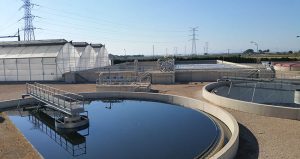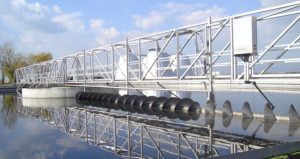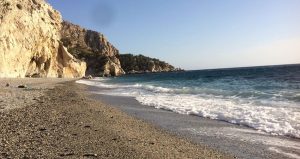Fukushima: TEPCO is planning to discharge treated water into the sea
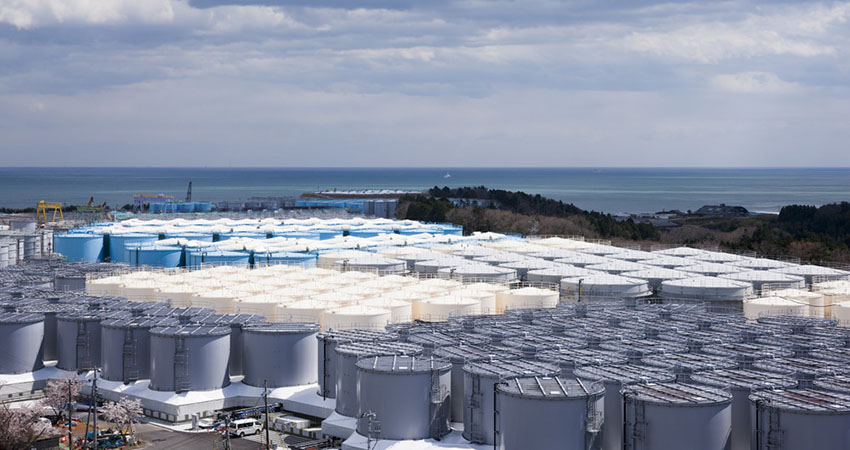
-
 Esther Rasenberg
Esther Rasenberg
Share article:
Wednesday 17 March Fukushima was hit by an earthquake with a magnitude of 7.3. After investigation TEPCO said no abnormalities were found at the nuclear power plant that is in the process of being decommissioned. Last week the Tokyo Electric Power Company TEPCO was presenting their plans to discharge treated and diluted water into the sea in Japan. Nearly 1.3 million cubic metres of treated water is now stored in tanks on the nuclear site in Fukushima.
If there is no damage to the water tanks due to this new earthquake the intention of discharging treated water remains unchanged. Luckily the tanks are built high above sea level and during their construction possible earthquakes were always part of the design. Before the water from the hanks will be discharged various radioactive materials will be removed with an Advanced Liquid Processing System (ALPS) except for tritium. Tritium is too similar to water to be separated effectively. After this treatment the water will be diluted a hundred times with seawater before discharge.
Press briefing
The procedure was explained by Junichi Matsumoto, TEPCO’s chief officer for ALPS Treated Water Management during a press conference organised by Dutch Japanologist Ingrid Houtkooper and the Ministry of Foreign Affairs of Japan. Also technical adviser Lars Roobol from the National Institute for Public Health and the Environment (RIVM) was involved.
Licence
TEPCO is now waiting for approval from the Japanese authorities to start discharging the treated and diluted water. The still growing amount of contaminated water has been a concern ever since the earthquake and tsunami in 2011 damaged the nuclear plant in Fukushima. Over the last 11 years over a thousand water tanks have been built to store all cooling, rain- and groundwater.
Treatment technology
ALPS is a combination of different treatment methods. The radioactive materials are absorbed by adsorption towers filled with active carbon and ion exchange material. Wastewater goes first through a caesium adsorption facilitiy to remove caesium and strontium. After going through a desalination process, some of the treated water is being reused as cooling. The radionuclides that remain after the ALPS-treatment are stored at the nuclear plant behind concrete walls. There are three ALPS facilities with maximum treatment capability per day of the system of a 2000 tons. At the moment 32% of the total amount of water is ALPS-treated and ready to be diluted and discharged into the sea.
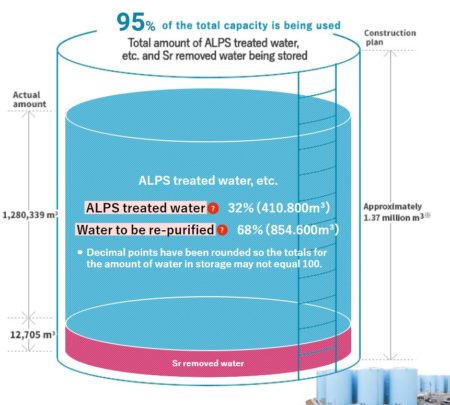
Reduction of contaminated water
The amount of contaminated water is until today still accumulating. Measures were taken after the disaster to diminish the amount of contaminated water until one third, but due to difficult circumstances it was not possible to stop the growth. “We are planning to reduce the amount of wastewater in 2025 from 150 cubic metres a day to a 100 cubic metres a day. TEPCO is repairing the roof so no more rain water will get into the buildings. And we are also concreting the surroundings so rain water cannot seep into the underground. We need the space to reduce the risk of more hazardous radionuclides”, states Matsumoto.
No risk for humans
Dutch experts Simon van Dullemen en Govert de With both stated the water that will be discharged by TEPCO will not cause severe problems for the environment and in humans. “Tritium is not relevant for humans”, said Govert de With. He explained strontium is more dangerous because this substance builds up in the bones. To secure the safety for humans it is not allowed to fish in the direct neighbourhood of the discharge tunnel.


